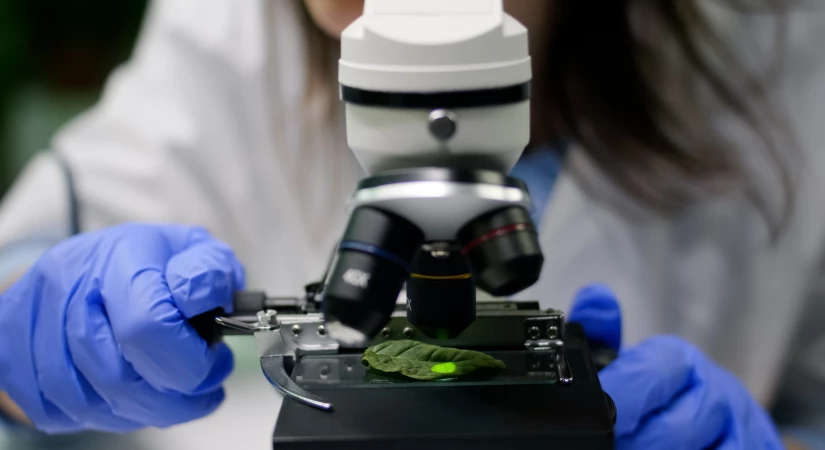Article
Principle of Total Organic Carbon Analyzer
Nov 29, 2022

Sunil Ingle
EHS General Manager
Table of Contents
- Introduction
- What is the Total Organic Carbon analyzer principle?
- Applications for TOC Analysis
TOC, aka Total Organic Carbon, is the quantity of carbon present in an organic compound.
It has evolved into a key indicator of estimated amounts of organic contamination and may thus be used to predict water quality.
A Total Organic Carbon analyzer is widely used to track changes in organic content over time.
Total Organic Carbon analysis is a technique for determining the quality of water.
Water purity is crucial in various industries, including pharmaceutical, industrial, power generating, and water supply. Bacteria or other inorganic substances in the environment can suggest filtration, storage, or system failure.
Contamination can also cause issues such as harming industrial systems or negatively affecting product quality, threatening profitability and customer health.
Furthermore, understanding water purity protects users, suppliers, and the environment since water may be used, supplied, and disposed of safely, cost-effectively, and environmentally responsibly.
Total Organic Carbon (TOC) testing is widely used to assess the level of organic pollution in water.
Total Organic Carbon (TOC) is a carbon-based indirect measure of organic compounds in water.
Organic molecules enter the water through the source water, purification, and distribution system materials.
Don't Miss Out, Total Organic Carbon and Their Types
TOC is monitored for process control as well as to meet regulatory requirements.
TOC analytical technologies aim to totally oxidize the organic molecules in an aliquot of sample water to carbon dioxide (CO2), detect the consequent CO2 concentration, and express this reaction as carbon concentration.
All technologies must distinguish between inorganic carbon present in water from sources like bicarbonate and dissolved CO2 and CO2 produced by the oxidation of the organic molecule in the sample.
TOC can be calculated by subtracting the measured IC (inorganic carbon) from the TC (total carbon) measured, which is the addition of inorganic and organic carbon: TOC = TC - IC.
What is the Total Organic Carbon analyzer principle?
A TOC analyzer can be used to determine Total Organic Carbon. The total organic carbon analyzer principle is that it operates by oxidizing the organic component into a quantifiable state.
When organic carbon is oxidized, carbon dioxide is produced, which may then be measured and turned into a TOC measurement.
TOC analysis begins with this measurement and then subtracts the 'inorganic carbon,' which is the concentration of carbonic salts and dissolved carbon dioxide.
A Total Organic Carbon analyzer (TOC analyzer) determines the amount of total organic carbon in a liquid or water sample. Because all TOC analyzers measure total carbon only, a total organic carbon analyzer must constantly account for inorganic carbon (IC), which is always present.
TOC analyzers, especially Portable Total Organic Carbon Analyzer, use the same basic technique to remove IC from liquid samples.
The IC is now transformed into carbon dioxide gas. A carrier gas extracts it from the liquid, and the rest of the inorganic carbon-free sample is oxidized, with the carbon dioxide produced directly related to the total organic carbon in the sample.
A syringe, an autosampler, or loop sampling can be used to inject the sample into TOC analyzers.
The measuring range of total organic carbon analyzers is an important feature. Total organic carbon analysis takes into account the carrier gas's flow rate, the analysis's average length, and the process temperature.
Applications for TOC Analysis
TOC detection is critical due to the potential health impacts of TOCs, not to mention the environmental effects and implications for pharmaceutical manufacturing processes.
- Water Supply Industry TOC Analyzer
Since the early 1970s, Total Organic Carbon Analysis has been used to monitor water quality in the water supply business.
Organic carbon can be found in source waters due to decaying natural organic materials such as human acid or amines and manmade sources such as fertilizers and detergents.
TOC analysis can estimate the presence of these contaminants in the water supply, allowing it to be treated for disinfection in water treatment plants.
This involves reacting the source water with chloride disinfectants to produce chlorinate disinfection by-products.
Furthermore, the presence of organic carbon is essential in determining the quality of organic shale resources, which is one of the most important unconventional fuels.
- Pharmaceutical Industry TOC Analyzer
Several pharmaceutical industries consider TOC analysis a critical tool for assessing water cleanliness.
High-purity water is a critical component in the pharmaceutical manufacturing process. It must therefore be ensured that any bacteria or alternative organic substances are eradicated so that product quality is not compromised and it is safe for ingestion.
Furthermore, Total Carbon Analysis can certify the cleanliness of pharmaceutical manufacturing equipment, which is critical in avoiding product contamination.
Organisations such as the United States Pharmacopoeia require total organic carbon analysis at all pharmaceutical industry phases.